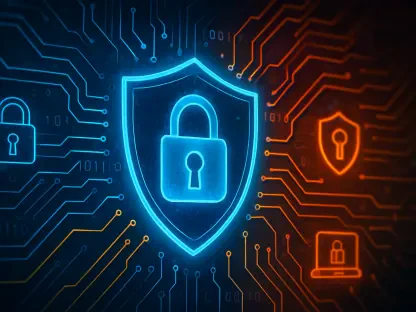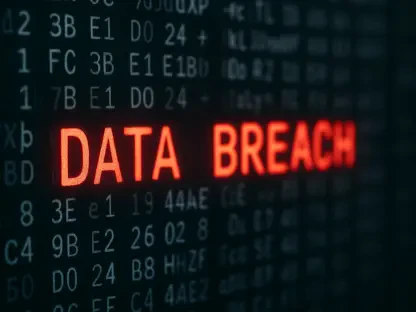In an era where digital communication shapes daily life, the European Union faces a profound challenge in its quest to protect the most vulnerable while safeguarding fundamental rights, a task made even more complex by the controversial Child Sexual Abuse Regulation (CSAR). Also known as the Chat Control Bill, this legislation has sparked intense debate across the continent. It seeks to combat child sexual abuse material (CSAM) by mandating the scanning of private messages, images, and links on messaging platforms. However, over 40 European tech companies have banded together to oppose the bill, arguing it threatens encryption, user privacy, and the region’s digital security. This clash between child safety and personal freedoms raises critical questions about whether a middle ground can be achieved. As discussions intensify ahead of pivotal EU meetings, the stakes for Europe’s digital landscape have never been higher.
The Core Conflict in EU Legislation
Child Safety Measures vs. Privacy Concerns
The heart of the debate lies in the EU’s attempt to address the horrific issue of CSAM through invasive technological measures. The proposed Chat Control Bill requires messaging services to scan user communications directly on devices before encryption takes place, a method critics describe as client-side surveillance. While the intent to protect children from exploitation is undeniable, this approach has alarmed tech firms and privacy advocates alike. Companies such as Proton and NordVPN argue that such scanning undermines the very foundation of secure communication. By creating backdoors in encryption, the legislation could expose users to risks from hackers or malicious actors seeking to exploit these vulnerabilities. The potential for abuse of such systems is a significant concern, as it could lead to mass surveillance under the guise of child protection, eroding trust in digital platforms across the EU.
Beyond the technical risks, the broader implications for individual rights cannot be ignored. Encryption serves as a cornerstone of personal privacy, protecting everything from financial transactions to sensitive personal conversations. The tech industry’s unified stance, expressed through an open letter signed by major players, emphasizes that weakening this safeguard could have a chilling effect on free expression. Citizens might hesitate to communicate openly if they fear their private messages are being monitored, even for a noble cause. Additionally, the precedent set by such a policy could embolden other regions or regimes to implement similar measures, potentially normalizing global surveillance. The tension between ensuring safety and preserving privacy remains a complex puzzle for EU policymakers, who must weigh the societal cost of each decision in this delicate balance.
Political Dynamics and Decision-Making
The path forward for the Chat Control Bill is far from certain, as political divisions within the EU add another layer of complexity. Germany, a key player in EU decision-making, has shown indecision, with internal disagreements between ministries creating uncertainty. The Federal Ministry of the Interior and the Federal Ministry of Justice hold conflicting views on whether to support or oppose the legislation, reflecting the broader struggle to reconcile child protection with digital rights. This hesitation could prove decisive at upcoming EU meetings, where member states will determine the bill’s fate. The outcome hinges on whether a consensus can be reached or if opposition from tech firms and privacy advocates sways key stakeholders to demand revisions.
Public scrutiny of the proposal continues to grow, fueled by concerns over its far-reaching implications. The tech sector’s warnings about the risks to encryption resonate with a wider audience, including civil liberties groups and concerned citizens. Many argue that the EU must prioritize policies that align with existing frameworks, such as the Cyber Resilience Act, which champions strong cybersecurity measures. The political stakes are high, as the decision will not only shape child safety initiatives but also define Europe’s approach to digital governance. Failure to address these competing priorities could undermine public confidence in the EU’s ability to navigate the complexities of the digital age, making the upcoming deliberations a critical juncture for the region’s future.
Implications for Europe’s Digital Future
Risks to Cybersecurity and Sovereignty
Compromising encryption through the Chat Control Bill poses significant risks to Europe’s cybersecurity infrastructure, according to industry leaders. By mandating the scanning of communications before they are encrypted, the legislation could create exploitable weaknesses in systems that protect critical data. Tech companies warn that such vulnerabilities might be targeted by cybercriminals or hostile foreign entities, threatening not just individual users but also businesses and government institutions. The potential fallout could be catastrophic, with breaches in sensitive sectors like finance or healthcare leading to widespread economic and social harm. This concern underscores the argument that child safety measures must not come at the expense of broader digital security.
Another pressing issue is the impact on Europe’s digital sovereignty. Weakening encryption could increase reliance on non-EU tech giants, particularly from the U.S. and China, who may not prioritize European values or regulations. This dependency risks undermining the region’s ability to control its digital destiny, as critical infrastructure and data could fall under foreign influence. Tech firms stress that maintaining strong encryption is essential for protecting national interests and fostering innovation within the EU. The debate thus extends beyond immediate safety concerns, touching on the long-term goal of ensuring Europe remains a leader in the global digital economy. Policymakers face the daunting task of crafting solutions that safeguard both children and the region’s technological independence.
Finding a Path Forward
Looking back, the opposition to the Chat Control Bill highlighted a pivotal moment in the EU’s struggle to harmonize child safety with digital privacy. The unified stance of over 40 tech companies, coupled with growing public awareness, forced a deeper examination of the legislation’s flaws. Their warnings about encryption risks and potential threats to cybersecurity resonated across political and social spheres, shaping the discourse around the bill’s future.
Reflecting on this debate, it became evident that the next steps required innovative approaches to address CSAM without sacrificing essential digital safeguards. Collaborative efforts between tech experts, policymakers, and advocacy groups emerged as a promising avenue to develop targeted technologies that detect abuse while preserving encryption. Revising the bill to focus on voluntary cooperation rather than mandatory surveillance was also seen as a potential compromise. Ultimately, the path forward demanded a commitment to balancing these priorities, ensuring that Europe’s digital policies evolved to protect both its children and its foundational principles of privacy and security.









